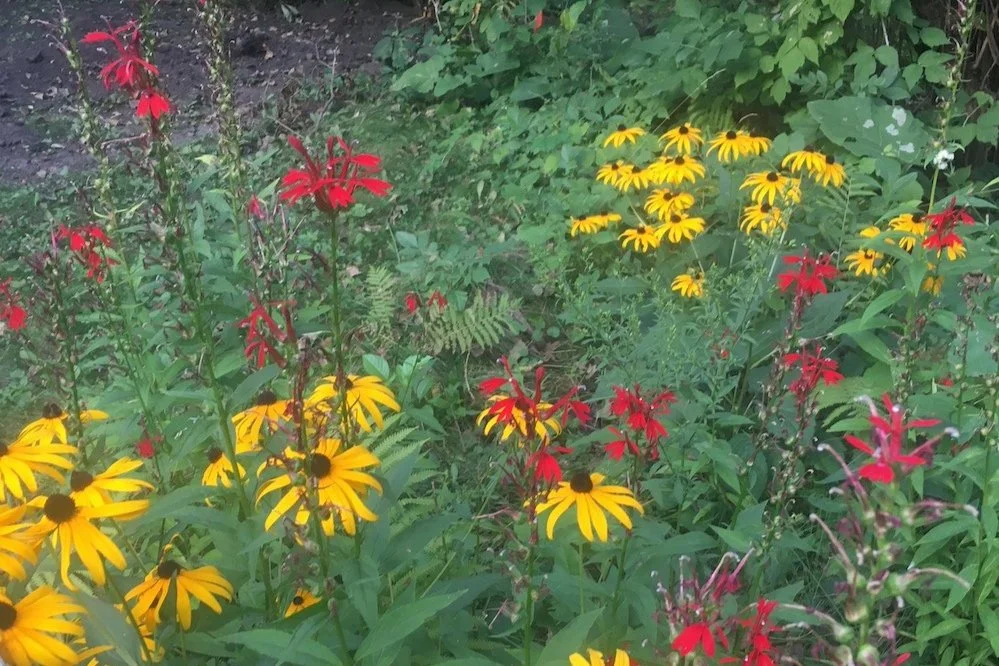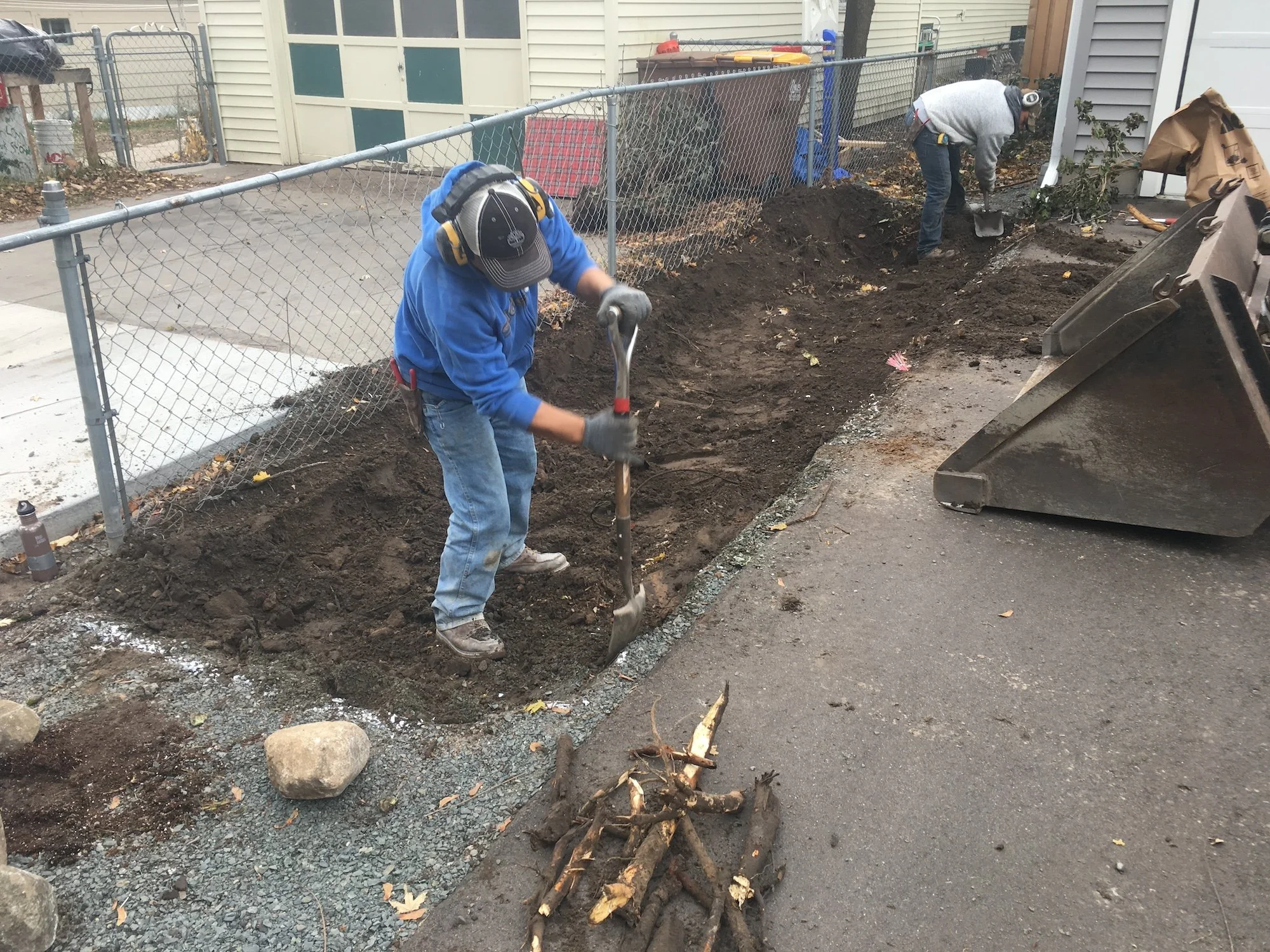
Rain Garden Designs
Rain garden landscaping is part of a larger solution to issues of water quality and inundation of our sewers, lakes and rivers with stormwater runoff.
Not only do rain gardens help to slow and sink water before it leaves your yard, but a rainwater garden design can also serve as a hotspot for important pollinators and cheerful songbirds.
Landscaping for stormwater isn’t just about making a bowl-shaped depression in the ground, or filling a hole with some gravel and hoping for the best with a french drain. As our climate becomes more unpredictable, Minnesota and Wisconsin experience periods of drought followed by flash flood type rains that dump a lot of water in a short amount of time.
A rain garden must also serve as a drought tolerant landscape plan to function properly in times of rain and dry weather.
Native Plant Rain Gardens
Many native wildflowers, bunchgrasses, sedges and shrubs thrive in rain garden landscaping. To have the highest benefit for our local ecology, native plants are the preferred choice for rain garden designs, since they not only provide excellent drought and flooding tolerance, but also offer high quality pollinator and songbird forage. My personal philosophy is that if we can infuse more benefits into the landscape while also improving natural beauty, why wouldn’t we?
From the bottom “wet zone” of a rain garden or stormwater bioswale to the upper dry edges, native plants are ideally suited to thrive while offering low-maintenance beauty and habitat.
Drought tolerant landscapes also save big on the water bill, especially during the summer dry spells we’ve had the past few years.
Stormwater Solutions Blend Science and Art
Rain garden landscaping, stormwater bioswales, and more potential solutions can only be of benefit if we know how much water they’ll need to accept, and how often. Knowing how much water is expected, where it’s coming from and where it needs to go to protect your house and landscape from overflow, we can create sensible landscaping for stormwater.
Function informs the final form a landscape may take. Once we know that a rain garden or stormwater feature will perform correctly as planned, then we can have fun meeting your aesthetic goals with durable, beautiful plant and materials selection and design.
Where to Start
Rain Gardens for Stormwater Grants
A stormwater plan is often necessary in certain watershed districts of the Twin Cities, for example. Without a detailed layout for your native plant rain garden, cost share funding may not be accessible. This funding can, in some cases, cover thousands of dollars worth of landscaping if it directly benefits local water quality near impaired waterways. Rain gardens can be a shining example of this, and are often awarded cost share grants in participating watershed regions.
If you’re interested in professional rain garden designs, landscape drainage or stormwater management for your Minnesota or Wisconsin property, please fill out the form below to initiate a free phone consultation.



